Affiliate links on Android Authority may earn us a commission. Learn more.
Motorola Moto Z / Force vs Samsung Galaxy S7 / Edge
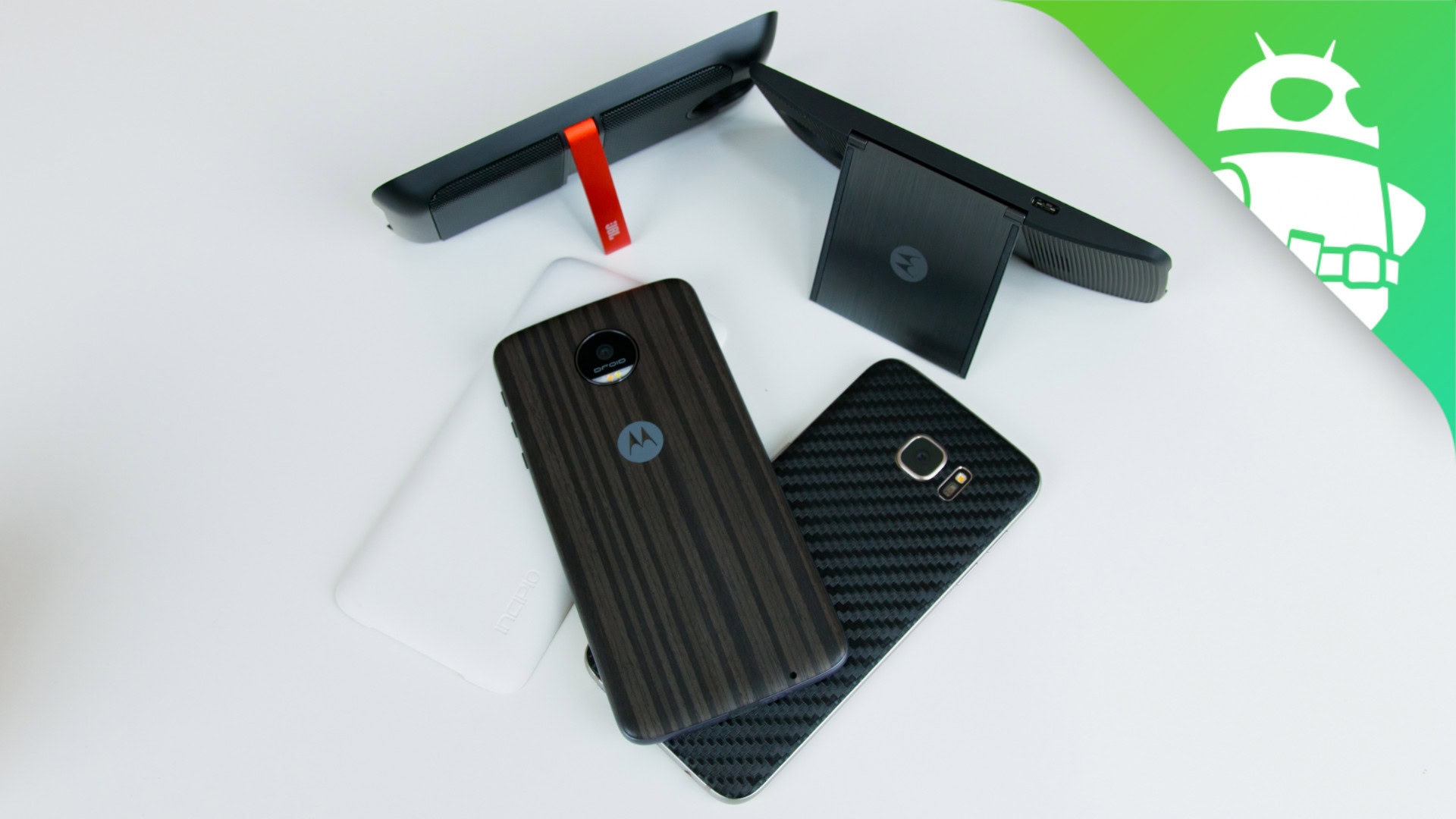
When it comes to flagship smartphones, consumers certainly don’t suffer from a lack of choice, but on the flip side, with so many great options available, it is quite difficult to select which device is best suited for you. In today’s comparison, we pit two of the hottest smartphones in the market right now, and they couldn’t be more different from each other.
On one hand is the Galaxy S7 Edge, with Samsung continuing to refine and improve what it started last year with its predecessors. On the other are the latest Motorola flagships, that are poles apart from anything we’ve seen from the company so far, and bring something unique to the table in the form of Moto Mods.
How does Motorola’s take on the Android flagship compare to one of the best and most well rounded smartphone offerings from Samsung? We find out, in this in-depth look at the Motorola Moto Z vs Samsung Galaxy S7 Edge!
Design
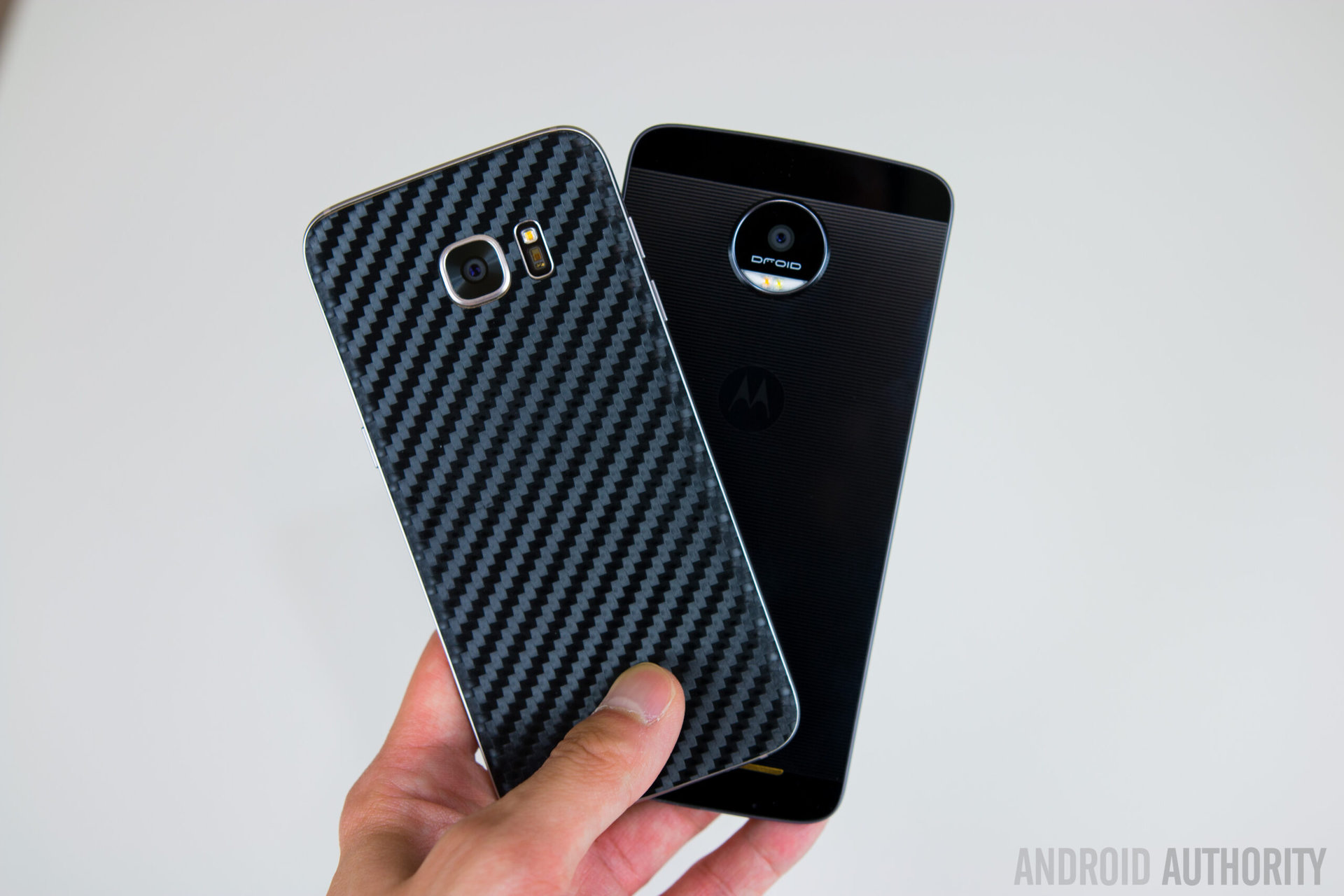
Starting with design and build quality, both of these phones are made with some high quality materials, and not only look fantastic, but also feel extremely sturdy. The Moto Z features glass on the front and back, with a smooth metal frame holding it all together.
The corners have been rounded off to allow for a more comfortable feel in the hand, and there is a subtle curve to the glass panel up front. However, for the most part, the phone is completely flat on the front and back, save for the rather large protrusion of the rear camera.
The Galaxy S7 Edge also features a metal and glass unibody construction, but unlike the Moto Z, you get curves everywhere, including the tapers along the sides of the back, the rounded corners, and of course, the curved edge display up front.
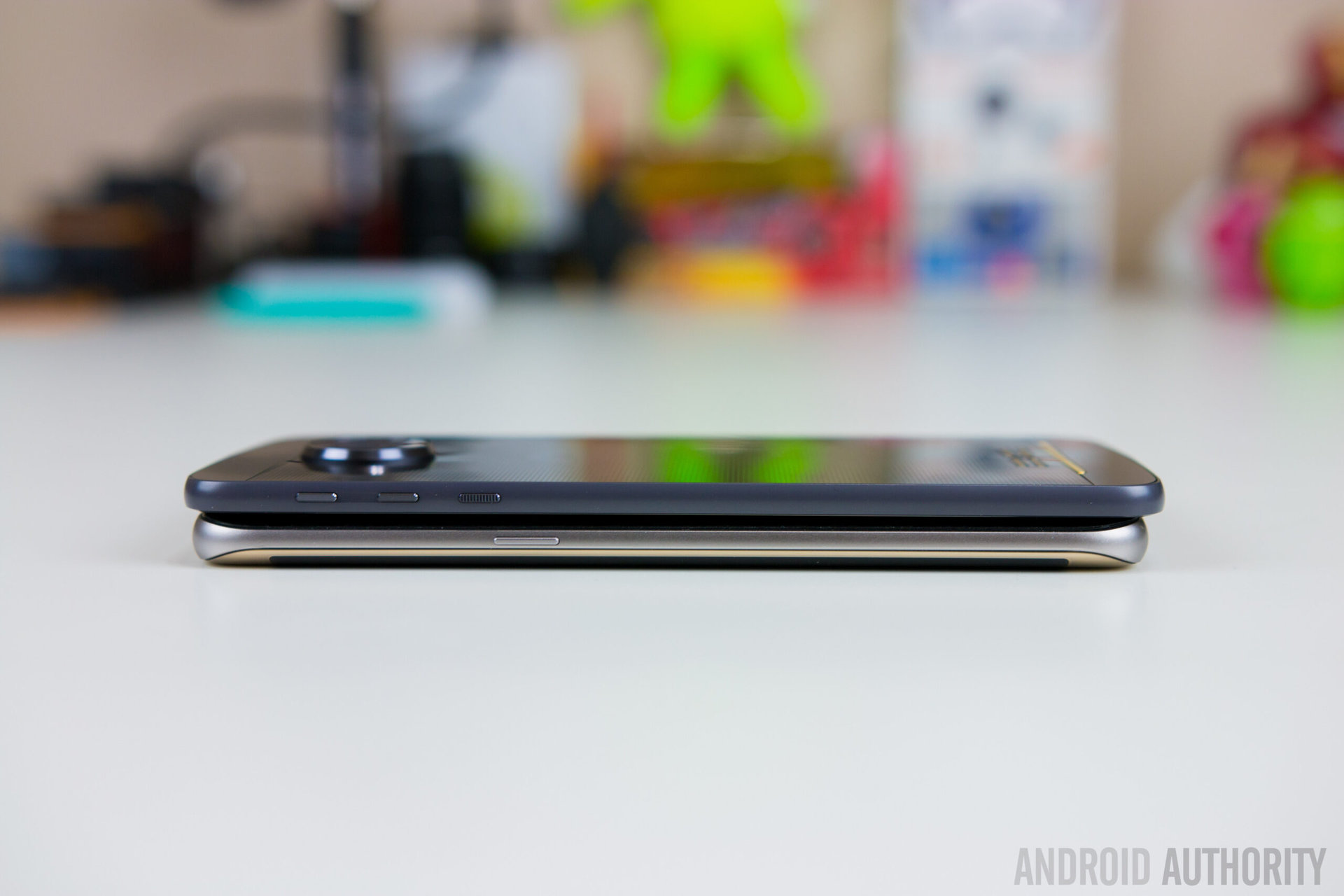
It’s not only of the most solid and comfortable feeling phones that Samsung has ever made, but comes with a sleek and eye-catching design. Samsung has done a good job with reigning in the camera protrusion with the Galaxy S7 Edge when compared to its predecessor, and is nowhere near as prominent as what is seen with the Moto Z.
The downside to any phone made predominantly with glass is that the device becomes a complete fingerprint magnet, so either have to clean it on a regular basis or use a case, to avoid this. Motorola offers a simple solution in this regard with the Style Shell covers, that gives the Moto Z some extra flair, while also adding enough thickness to cover that camera bulge.
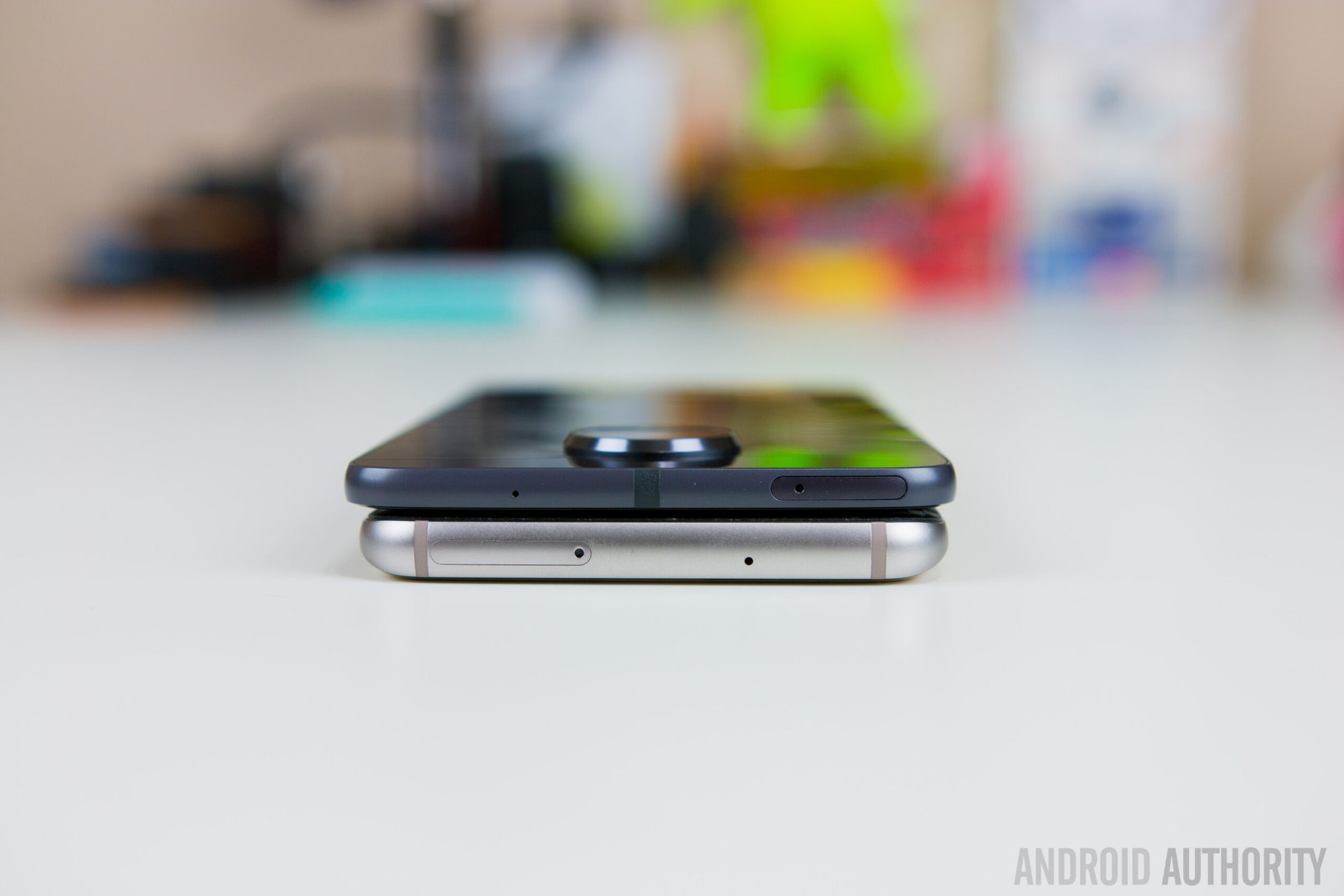
Without any covers or Moto Mods attached, the Moto Z is an extremely thin smartphone, with a thickness of just 5 mm, and it’s certainly very impressive how thin Motorola has managed to make it. The Moto Z Force is slightly thicker at 7 mm, which is still quite thin, and you really have to hold these phones in your hand to truly appreciate this design aspect.
That said, apart from the thickness, the Moto Z is actually larger than the Galaxy S7 Edge in every other dimension and has a much larger footprint, despite both smartphones coming with 5.5-inch displays. Samsung has managed to make the Galaxy S7 Edge the more compact phone by having a smaller top and bottom chin, thinner bezels, and adding curves to the glass on the left and right sides.
Display
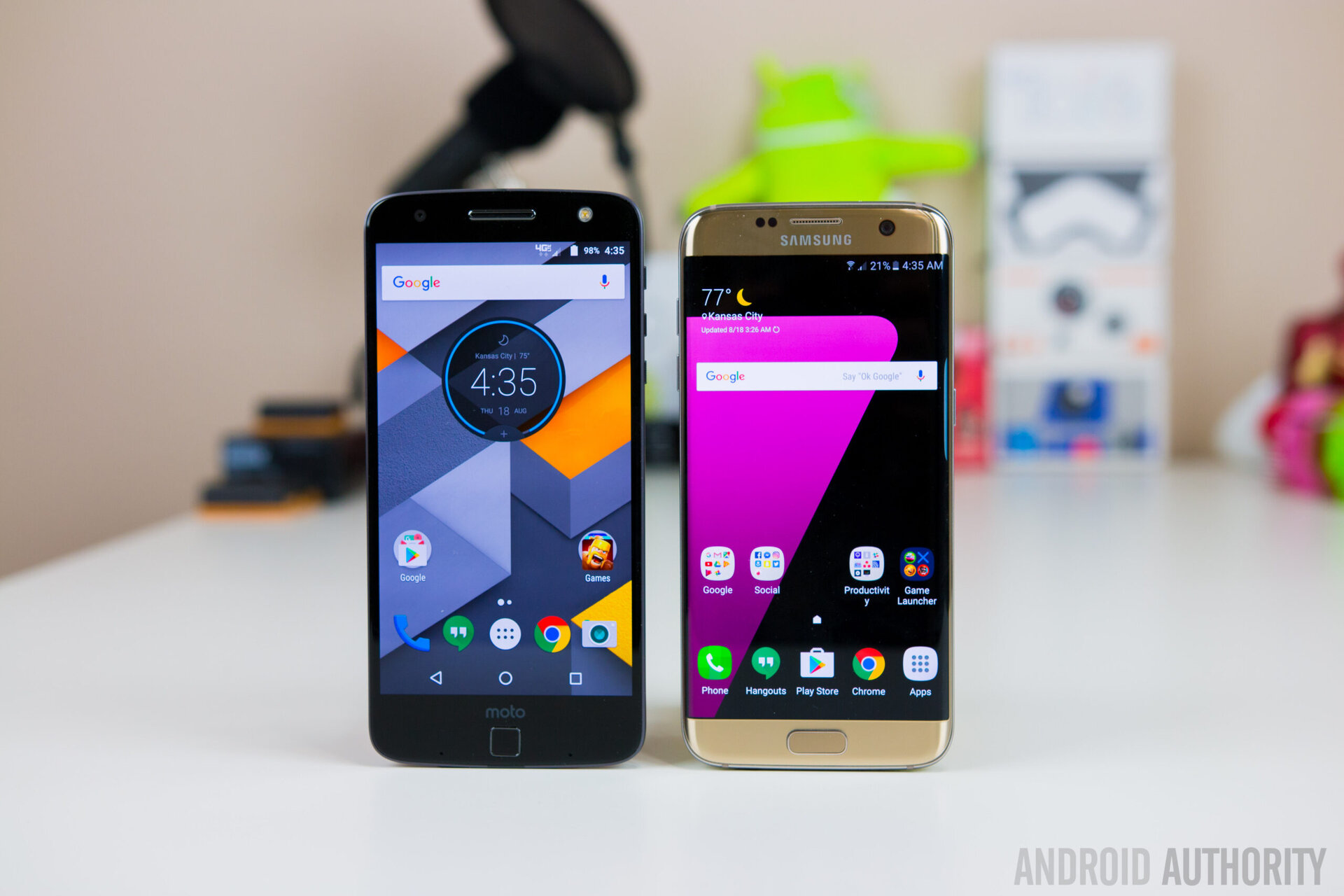
Both smartphones come with 5.5-inch AMOLED displays, or Super AMOLED in the case of the Galaxy S7 Edge, with Quad HD resolution. As expected, both displays are plenty sharp, and are very vibrant, saturated, and with deep, inky blacks. The display of the Galaxy S7 Edge is a touch brighter and offers slightly better viewing angles, but for the most part, these are very comparable displays, and things like gaming and watching videos are very enjoyable on either of these screens.
One benefit of the Samsung flagship is its Always On display feature, which lights up only the necessary pixels to let you see important information like the time, date, battery life, the calendar, and notifications, with a quick glance.
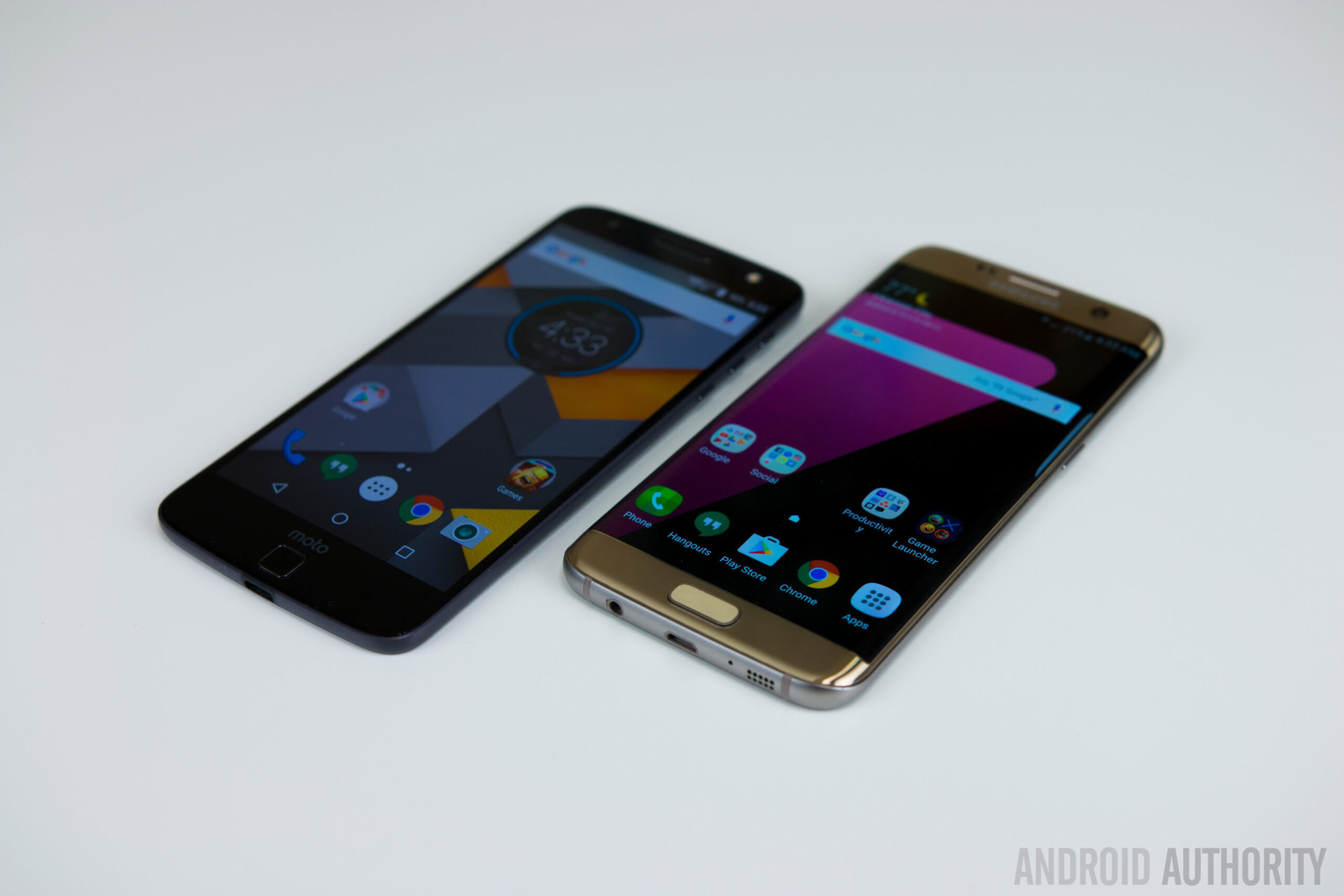
While the Moto Z doesn’t come with this feature, it offers the next best thing with Moto Display, which remains one of the best features to ever grace Android. The display will periodically pulsate whenever you have any notifications, and you can manually wake it by either picking up the phone, or simply waving your hand over it.
Worth mentioning here is that the Moto Z Force comes with a shatterproof display, that makes it far more durable when compared to the standard Corning Gorilla glass 4 panels that are found with the regular Moto Z and the Samsung Galaxy S7 Edge.
Performance
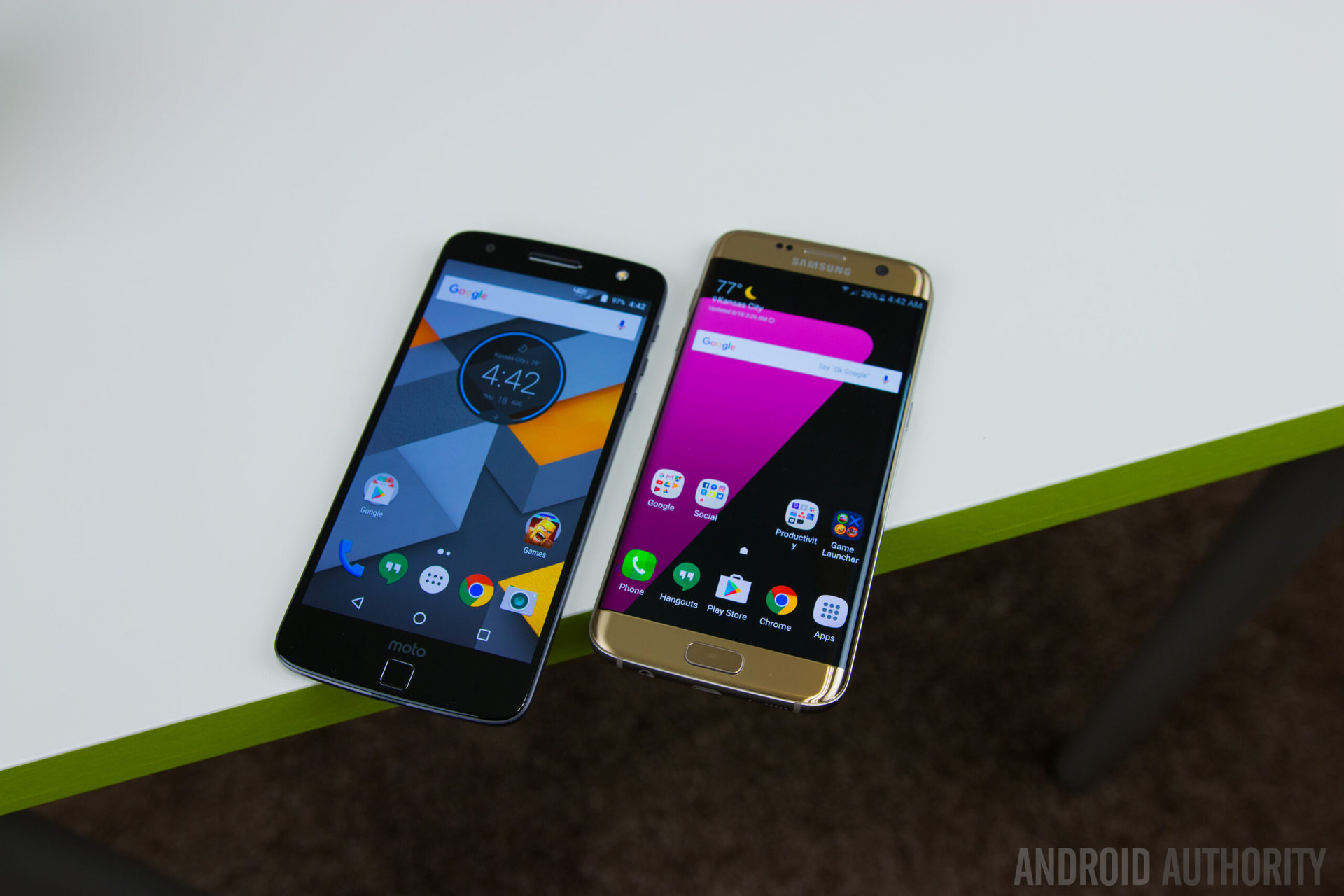
Under the hood, both smartphones feature identical specifications, including the Qualcomm Snapdragon 820 processor, Adreno 530 GPU, and 4 GB of RAM. This is the same processing package that is found with almost every current generation flagship smartphone, and it’s not surprising that both these devices are blazing fast, and can handle anything, including multi-tasking, web browsing, and playing high-end games, with ease. Despite offering two very different software experiences, the overall performance with both is very smooth, and you will be hard-pressed to find a noticeable difference between them.
Hardware
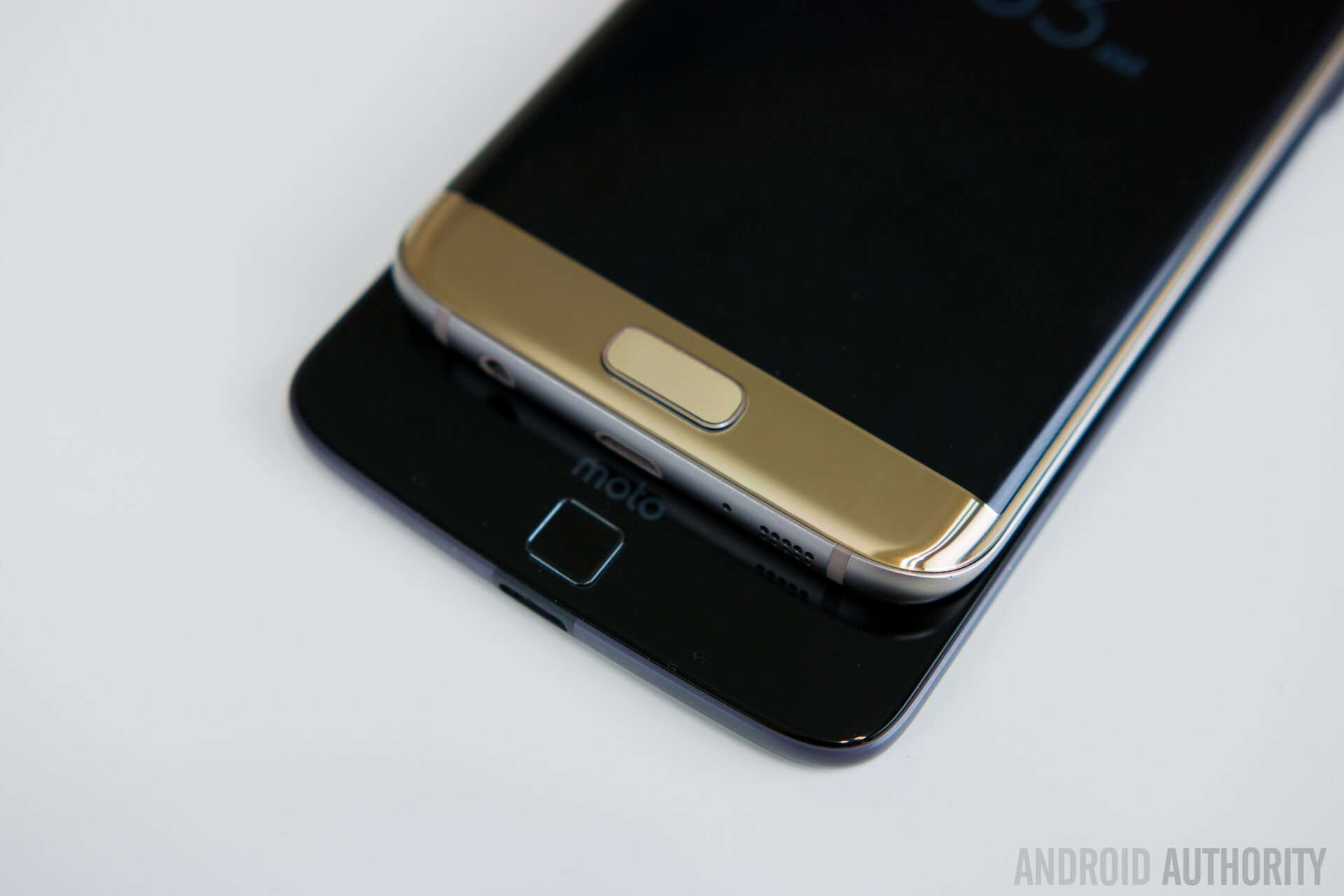
Both smartphones are available with 32 GB or 64 GB of on-board storage, and both offer expandable storage capabilities via microSD card up to 256 GB, so storage will not be a concern with either device.
Sitting right below the display of both devices is a fingerprint scanner, with the difference being that while the fingerprint sensor of the Galaxy S7 Edge is embedded into the home button, that isn’t the case with the Moto Z, which uses on-screen navigation keys. This can certainly take some getting used to, especially if you are already comfortable with also using a front-facing scanner as a home button, and when using the Moto Z, you will find yourself occasionally reach for the fingerprint sensor for no reason.
As far as accuracy and reliability of the fingerprint sensors are concerned, both work extremely well, but you will find the one of the Moto Z to be a tad quicker, mainly because of the fact that is reads your fingerprint simply when you touch it, instead of needing to press down on the button as you have to do with the Galaxy S7 Edge. Even though the scanner of the Moto Z does not double as a home button, it does function as a lock key to put the phone back to sleep, which is a nice touch.
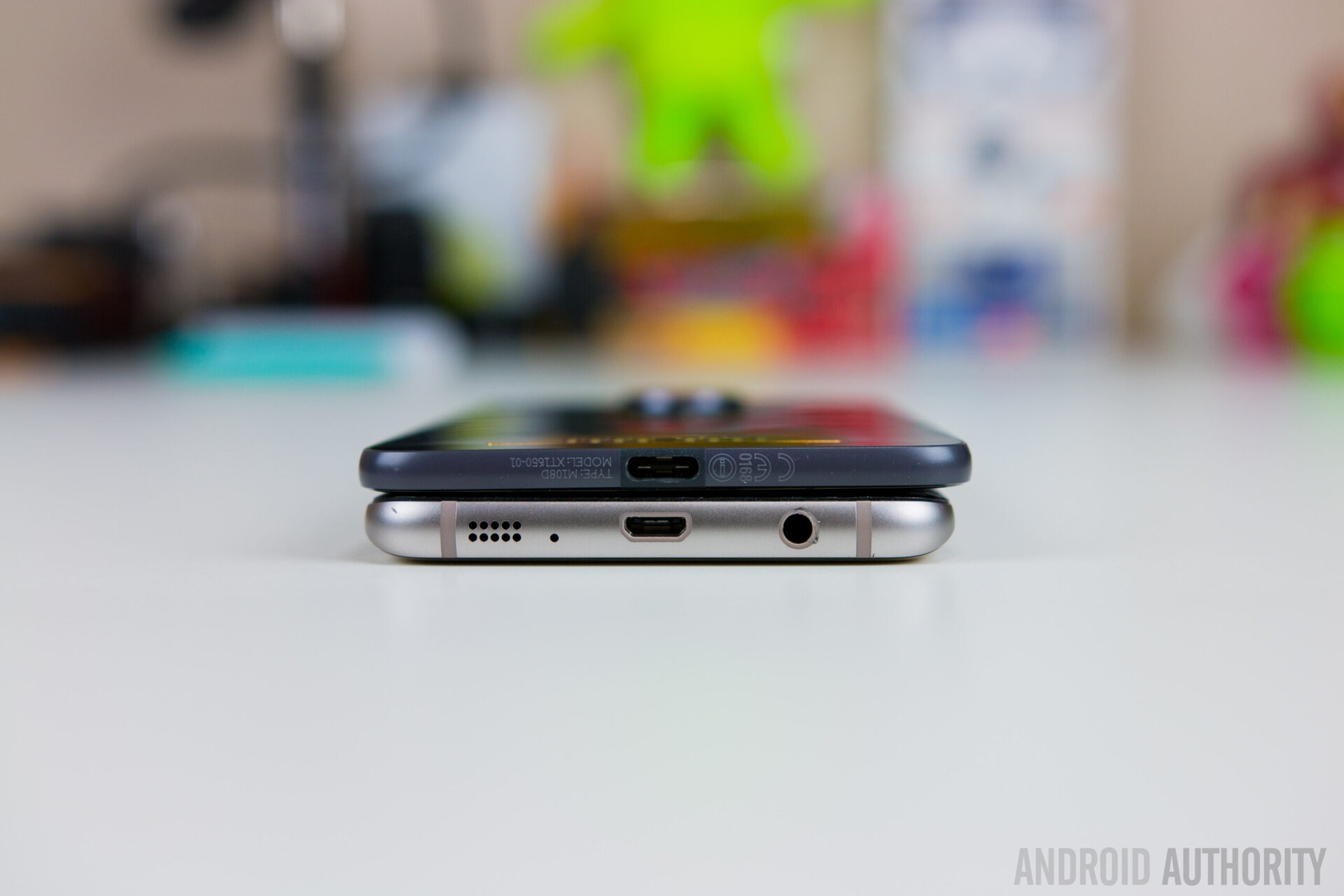
A big difference in hardware between the two is that the Moto Z comes with a USB Type C port, while the Galaxy S7 Edge features a microUSB port. The latter also comes with a headphone jack while the Moto Z does not, which is one of the compromises that had to be made to keep the sleek profile of the device. Instead, you will have to use a Type C adapter to use your regular headphones with the Moto Z.
The Moto Z does offer a better sounding speaker, with its front-facing position better than the bottom-firing speaker of the Galaxy S7 Edge. That said, neither speaker is particularly impressive, but you do have the JBL speaker Moto Mod with the Moto Z to make up for this deficiency.
Speaking of Moto Mods, there are only a few that are currently available, including the JBL speaker, the projector, and the Incipio power pack case, but there should be more coming soon, as more third-party manufacturers jump on-board and create new Moto Mods. These Moto Mods are certainly a big selling point when it comes to the Moto Z, given how they work and the extra functionality that they offer. Just keep in mind that these Mods aren’t exactly cheap, and do add a significant amount of heft to the phone.
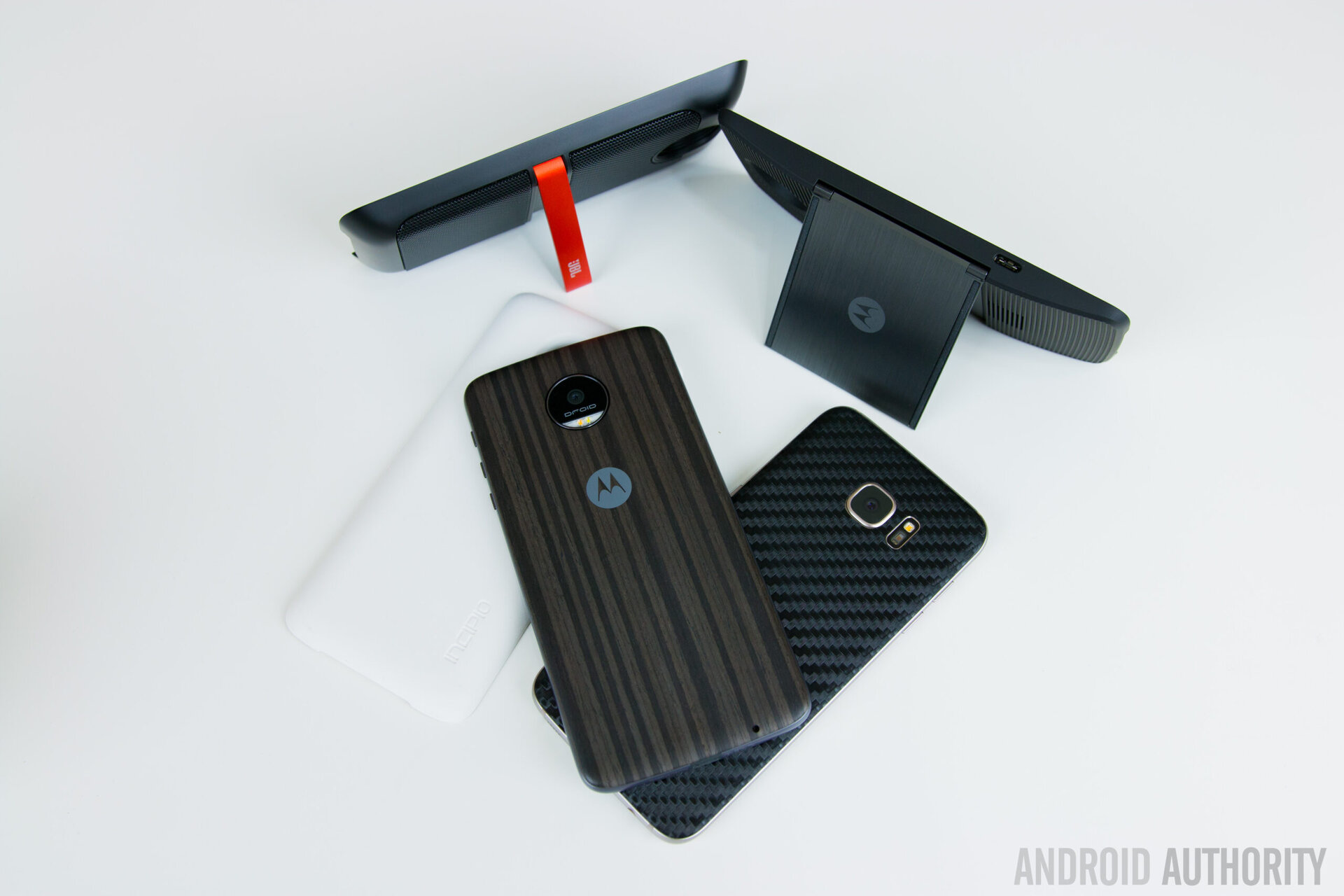
The speaker of the Galaxy S7 Edge is also more muffled and distorted due to the built-in water and dust resistance, which many will agree is a small price to pay to keep your device protected from the elements. The Moto Z is also water resistant, but does not come with the IP68 rating that the Galaxy S7 Edge features, so while the former can survive a splash or a small spill, it certainly won’t work if submerged entirely.
When it comes to battery life, the Moto Z packs a rather small 2,600 mAh battery, compared to the 3,600 mAh unit of the Galaxy S7 Edge, but the playing field is a lot more even when considering the Moto Z Force and its 3,500 mAh battery. Battery life is obviously going to vary depending on your usage, and while the Moto Z does allow for a full day of use, you will be able to do that far more comfortably with the Moto Z Force and the Galaxy S7 Edge.
Both devices come with fast charging capabilities, so you will be up and running in no time, and in the case of the Galaxy S7 Edge, you also get fast wireless charging. If battery life is a concern, Motorola has a simple solution for the Moto Z with the Incipio power pack case, which to me, is currently the most useful and practical Moto Mod that is available.
Camera
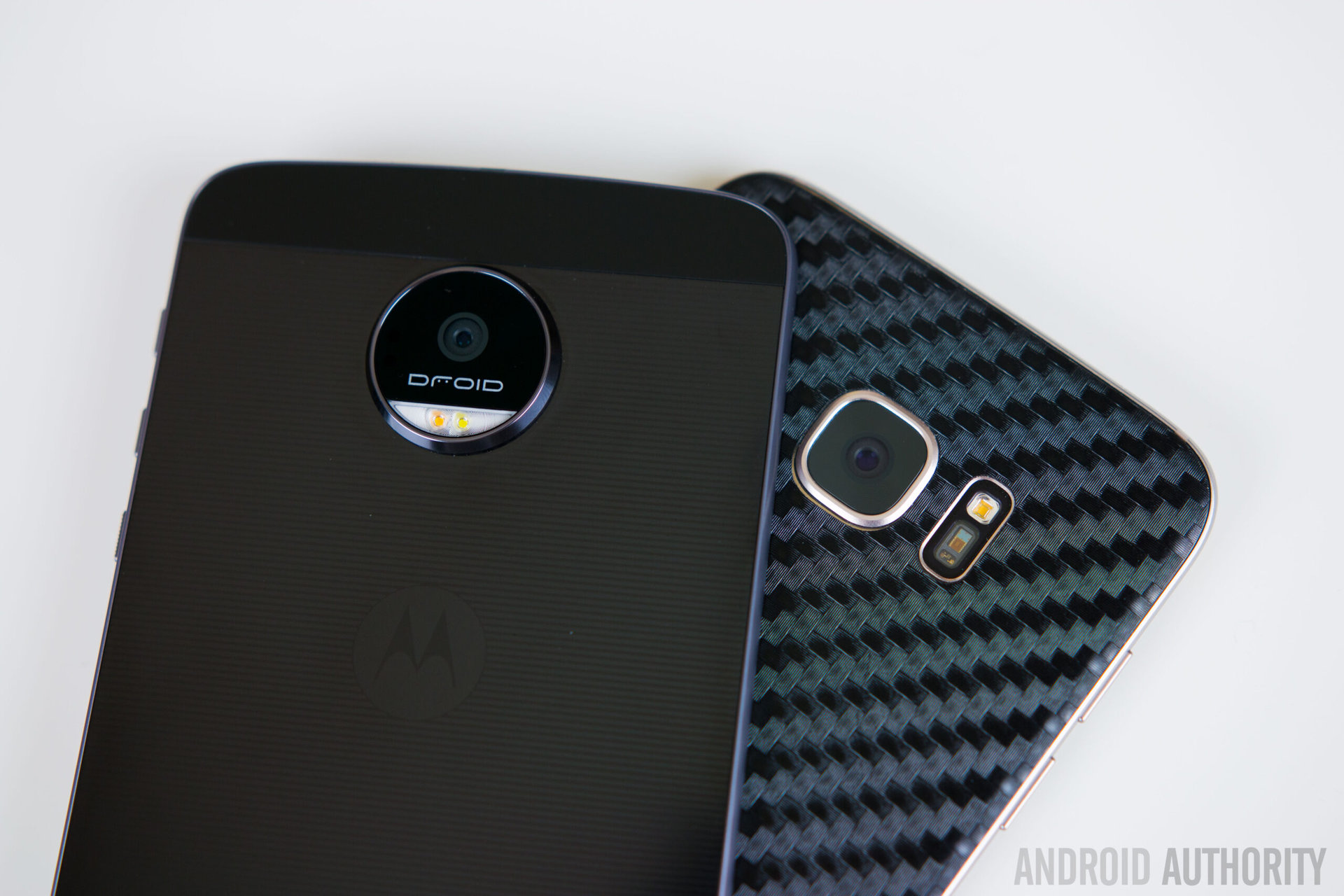
The Moto Z comes with a 13 MP rear camera with a f/1.8 aperture, OIS, and a dual tone LED flash, while the camera of the Moto Z Force is bumped up to 21 MP. On the other hand, the Galaxy S7 and Galaxy S7 Edge come with a 12 MP rear shooter, f/1.7 aperture, OIS, and a blazing fast dual pixel auto focus system that allows it to focus much faster than any other smartphone camera currently available.
When it comes to the camera software, Motorola keeps things pretty simple by only offering the most basic of camera modes, while Samsung gives you a bevy of options with a slew of modes and camera effects to choose from. Both do offer fairly robust manual modes however.
Moto Z camera samples
If I had to pick either one of these cameras, the Galaxy S7 Edge would be my choice. The Moto Z can take some decent photos, but it really pales in comparison to the Samsung flagship. Photos taken with the latter are sharper and more detailed, and with better dynamic range, while the Moto Z has the tendency to overexpose and blow out highlights.
Galaxy S7 Edge camera samples
The Galaxy S7 Edge camera is also the much faster one overall. In low light situations, the Moto Z is quite slow to capture an image, especially if you are using HDR, while the Galaxy S7 Edge remains really fast when it comes to focusing and taking a shot. The Samsung smartphone camera does have some trouble with white balance in low light conditions, but the photos still come with a lot more detail when compared to shots taken with the Moto Z.
As far as the front cameras go, both phones are utilizing a 5 MP sensor, which work well enough for taking selfies, but the Moto Z has an advantage here with its front-facing flash, which can be extremely helpful when taking selfies in low light.
Software
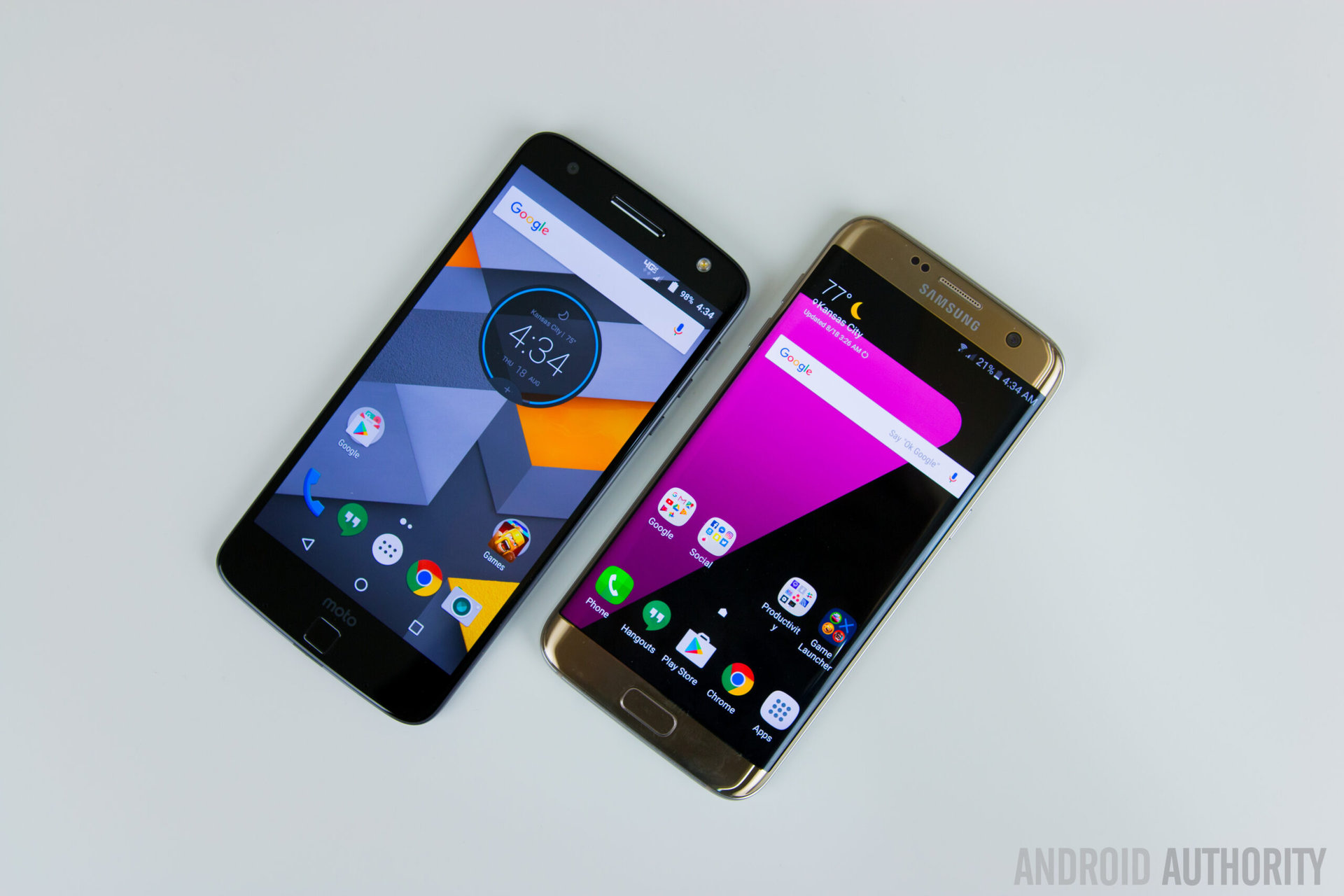
One of the best parts about Motorola is that they keep the software experience pretty close to stock Android, but with a few very useful additions built in. The Moto Z is running Android 6.0 Marshmallow, and it is as close to stock Android as you are going to get without the device being a Nexus smartphone. Motorola’s customizations aren’t numerous, but they are some of the most useful features we’ve seen on an Android smartphone.
You have features like the Moto Display that we mentioned earlier, and there is also Moto Voice, that lets you call upon your Moto Z from across the room. Also available are a slew of gestures, such as the double chop to turn on the camera flash, and the double twist of your wrist to launch the camera.
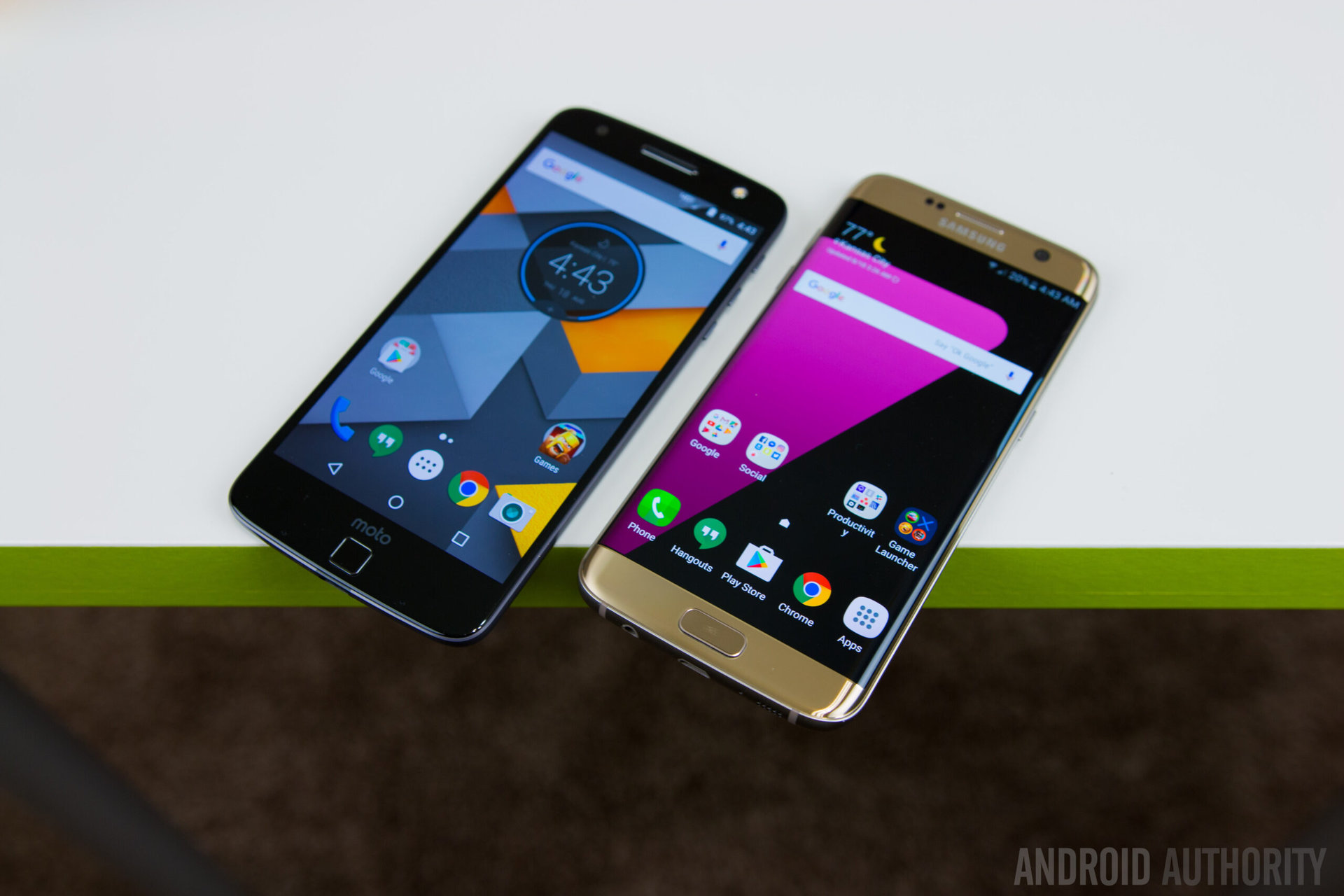
The only real down side now is that the Moto Z is a Verizon exclusive, so it comes with a lot of Verizon bloatware, and a host of pre-installed games and third-party applications. An unlocked version will be coming soon though, but if you are looking to get the Moto Z right away, the bloatware is something you will have to deal with.
The Galaxy S7 Edge is also running Android 6.0 Marshmallow, but Samsung’s take on Android, with the TouchWiz UI, couldn’t be more different from stock Android. Samsung has been doing a better job with streamlining the software experience as much as possible, and what you get is a much cleaner and less bloated user interface than before.
With the Galaxy S7 Edge, you also get the Edge panels, that can give you quick access to apps, sports scores, the weather, your contacts, and a variety of other shortcuts, but just swiping in from the edge of the glass. These panels can be useful, but like any new smartphone feature, you will have to train yourself to get used to them.
Specs comparison
| Motorola Moto Z | Samsung Galaxy S7 Edge | |
|---|---|---|
Display | Motorola Moto Z 5.5-inch AMOLED display Quad HD resolution, 535 ppi | Samsung Galaxy S7 Edge 5.5-inch Super AMOLED display Quad HD resolution, 535 ppi |
Processor | Motorola Moto Z 2.15 GHz Qualcomm Snapdragon 820 processor Adreno 530 GPU | Samsung Galaxy S7 Edge 2.15 GHz Qualcomm Snapdragon 820 processor Adreno 530 GPU |
RAM | Motorola Moto Z 4 GB | Samsung Galaxy S7 Edge 4 GB |
Storage | Motorola Moto Z 32/64 GB expandable via microSD card up to 256 GB | Samsung Galaxy S7 Edge 32/64 GB expandable via microSD card up to 256 GB |
Camera | Motorola Moto Z 13 MP rear camera, f/1.8 aperture, OIS, dual tone LED flash 5 MP front-facing camera, front-facing flash | Samsung Galaxy S7 Edge 12 MP rear camera, f/1.7 aperture, OIS, dual pixel autofocus, LED flash 5 MP front-facing camera |
Connectivity | Motorola Moto Z Wi-Fi 802.11 a/b/g/n/ac Bluetooth 4.1 NFC FM Radio GPS + GLONASS USB Type-C 1.0 | Samsung Galaxy S7 Edge Wi-Fi 802.11 a/b/g/n/ac Bluetooth 4.2 NFC GPS + GLONASS microUSB 2.0 |
Battery | Motorola Moto Z 2,600 mAh | Samsung Galaxy S7 Edge 3,600 mAh |
Software | Motorola Moto Z Android 6.0 Marshmallow | Samsung Galaxy S7 Edge Android 6.0 Marshmallow |
Dimensions | Motorola Moto Z 153.3 x 75.3 x 5.2 mm 136 grams | Samsung Galaxy S7 Edge 150.9 x 72.6 x 7.7 mm 157 grams |
Gallery
Final thoughts
So, there you have it for this in-depth look at the Motorola Moto Z and Samsung Galaxy S7 Edge! Both of these devices are two really fantastic smartphones in their own right, but what it is really going to come down to is how much you value the Moto Mods, and how easily you can get your hands on one of them. The Galaxy S7 Edge is the easier phone to get right now, with it being available from all major network carriers, and while an unlocked version of the Moto Z will be arriving soon, Verizon is your only option currently.
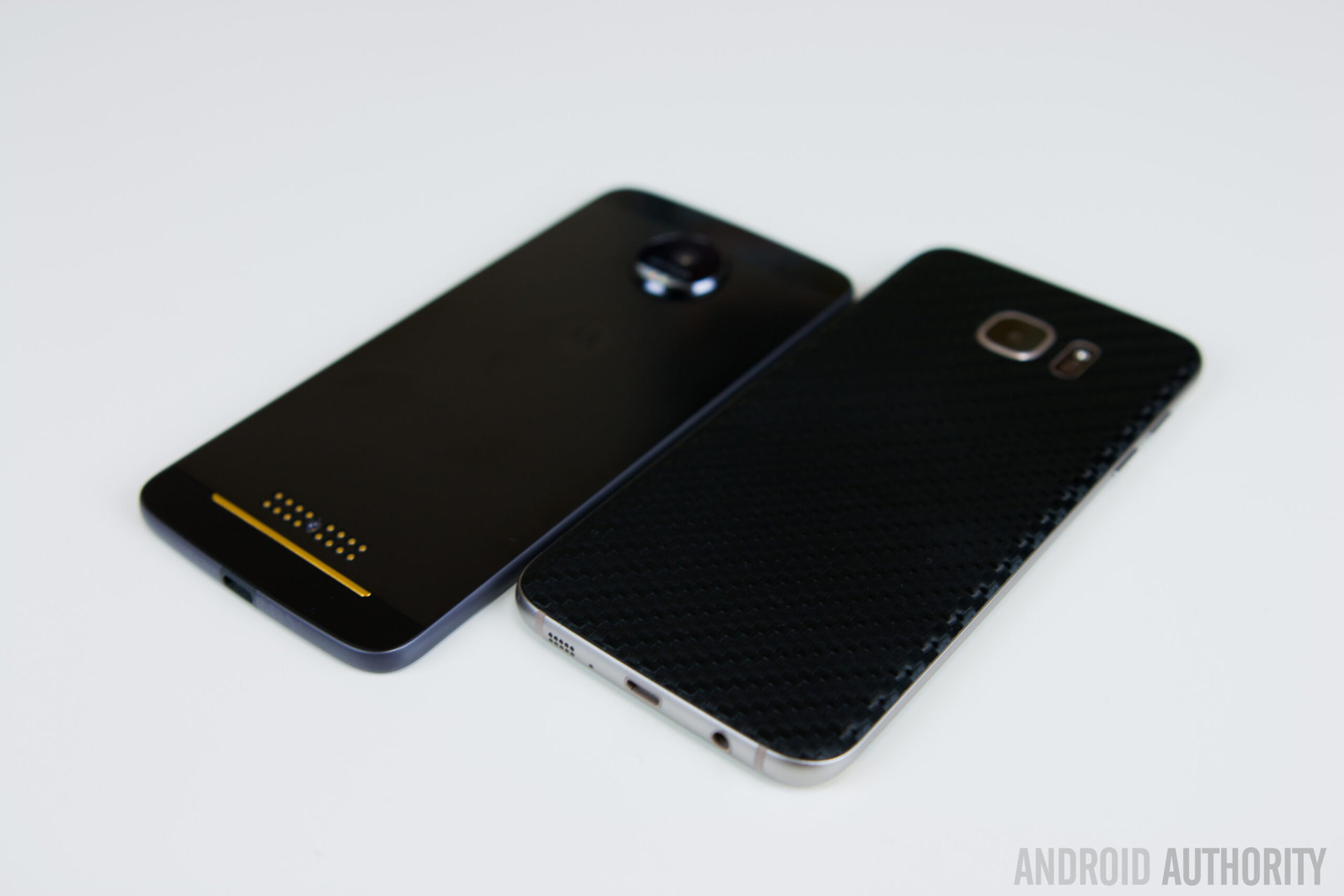
The Moto Z is a very solid option however, and the Moto Mods are just icing on the cake, providing a very elegant and simple way of modifying your smartphone. If you are willing to spend the extra money, you certainly won’t be disappointed. While the Samsung Galaxy S7 Edge doesn’t have any crazy bells and whistles, or extra moving parts, it’s an all around great smartphone that ticks all the right boxes, and for most people, that is going to be more than enough to suit their needs.